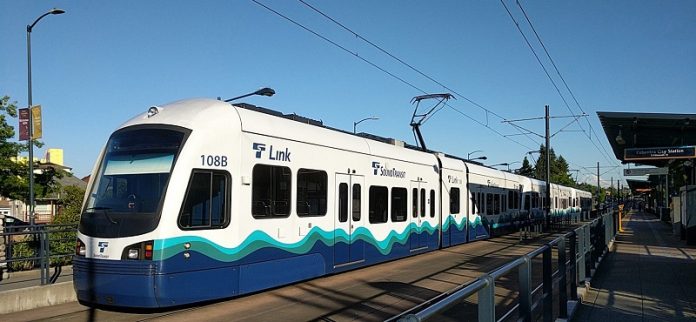Sound Transit is rolling out operational improvements to Central Link for riders by adding an extra car to many light rail trains during weekday day-time service hours. The change, which starts today, means that riders should have some extra legroom–for now anyway. The agency is responding to high ridership demands that have continued to grow since the expansion of the light rail line to the University of Washington, Capitol Hill, and Angle Lake last year.
In April, year-over-year ridership grew 17% to 71,382 riders on weekdays, up from 60,790 in April 2016. This time period fully captures the first full month of data available to compare ridership change since the University Link extension opened in March 2016. By comparison, ridership on the line was 34,034 riders on weekends in April 2015, which indicates overall ridership growth over two years increasing 110%.
The service improvement means that Sound Transit will be able to operate 12 three-car trains and seven two-car trains during weekday day-time hours. For riders during the hours between 5am and 6.30pm, three-car trains should be appearing much more frequently at platforms as opposed to a two-car train. This should reduce overall congestion on trains–especially during peak hours–until ridership demand invariably rises to meet the added capacity. After 6.30pm, service levels will fall to seven two-car trains for the remainder of the evening so that the other light rail vehicles out of commission can be cleaned and maintained for the following day’s service. Previously, Sound Transit had been operating only seven three-car trains and 12 two-car trains during these hours.
However, total service frequency on Central Link will remain unchanged with trains coming every 15, 10, and six minutes depending upon the hour.

Additionally, Sound Transit says that more three-car trains will be used for special events and sporting matches to meet the kind of demand that those create.
Title image of three-car light rail train courtesy of Sound Transit.
Stephen is a professional urban planner in Puget Sound with a passion for sustainable, livable, and diverse cities. He is especially interested in how policies, regulations, and programs can promote positive outcomes for communities. With stints in great cities like Bellingham and Cork, Stephen currently lives in Seattle. He primarily covers land use and transportation issues and has been with The Urbanist since 2014.



